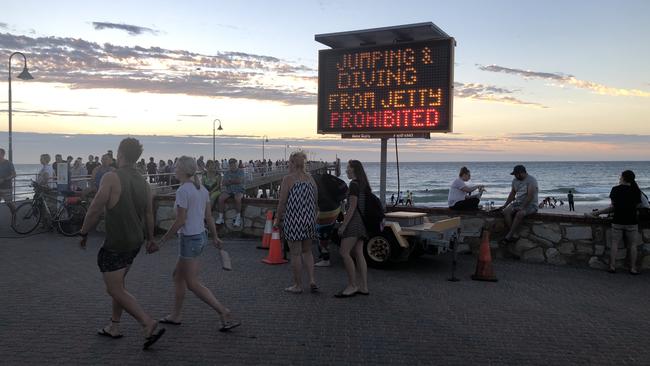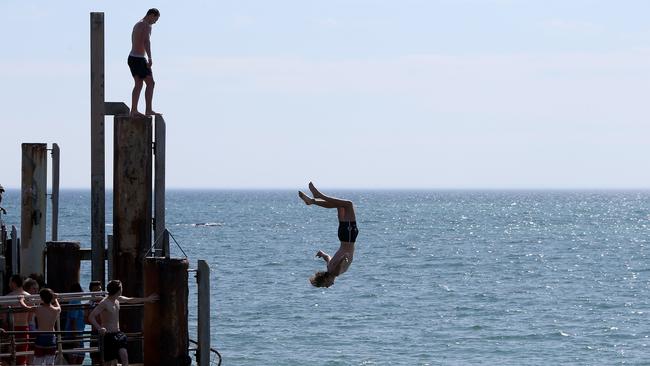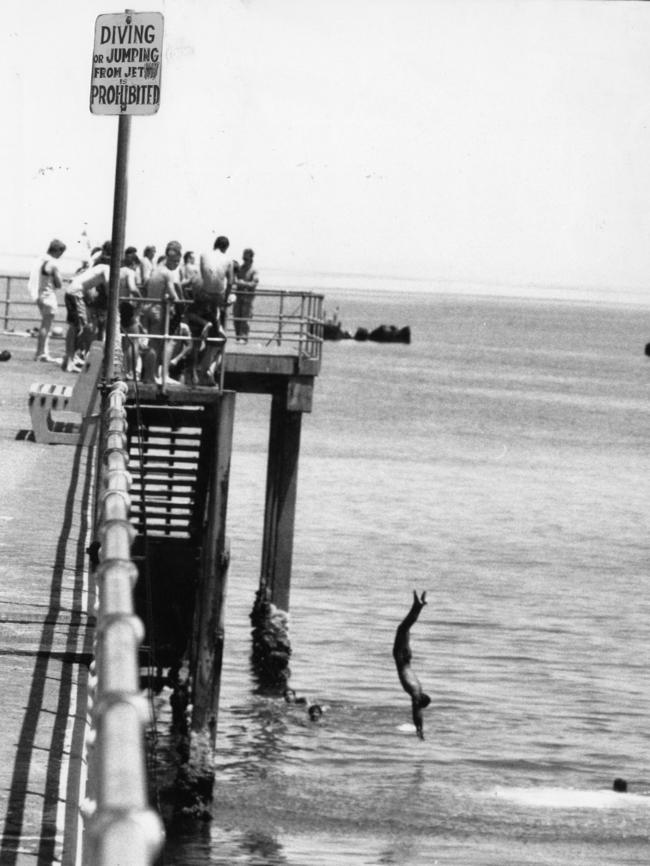Not one fine for jetty jumping in five years
NOT a single fine has been handed to revellers since the risky behaviour of jetty jumping was outlawed at Glenelg five years ago.
West & Beaches
Don't miss out on the headlines from West & Beaches. Followed categories will be added to My News.
- More must be done to protect ‘vulnerable’ from drowning
- Access to Glenelg breakwater banned
- State Gov to reviewwater safety programs at SA beaches
- Divers recover body of Nitisha Negi
JETTY jumping is officially banned at Glenelg – but not a single fine has been handed to revellers since the risky behaviour was outlawed five years ago.
Holdfast Bay Council asset general manager Steve Hodge last week said it was difficult to enforce the rule, which came into effect in January 2013.

His comments follow the drowning of 15-year-old Eliase Nimbona last month, who was seen jetty jumping before he died.
Mr Hodge said it was difficult to catch jetty jumpers, who were often underage.
“We are not authorised to ask for ID from minors,” Mr Hodge said.
“We notify police but often they have other priorities in the community, and by the time they are able to attend the jetty jumpers have moved on so it is too late.
“Our bylaw is in place to deter people from doing it ... jetty jumping is a really risky behaviour because you just don’t know how deep the water is.”
Eliase was unconscious and facedown in the water when he was spotted by beachgoers near the jetty on December 18.
A witness told police that he had seen Eliase jetty jumping earlier.
The tragedy came just eight days after 15-year-old Nitisha Negi drowned at Glenelg. It is believed she was swept away by a wave at the Glenelg breakwater.


In response, Holdfast Bay announced on December 12 it would ban people from walking onto or swimming near the breakwater.
No one has been fined yet in relation to this matter.
Mr Hodge said the council was working with surf lifesavers to raise awareness about beach safety.

Glenelg Surf Life Saving Club president Georgie Cole said new strategies were being put to Emergency Services Minister Chris Picton to further protect beach users.
“This is about all members of the public and how they approach that jetty,” Ms Cole said.
“Our focus is to make sure people swimming in the patrolled area are safe ... we want everyone to be safe and take care of themselves.”
Last month, Mr Picton said the government would consider physically modifying jetties, such as altering steps that jetty jumpers use to climb back up, to improve safety.
“We’ll consider all the options that might be available in terms of improving safety on our beaches,” Mr Picton said.
The government will also review water safety programs aimed at migrants and overseas visitors in a bid to prevent further tragedies at South Australian beaches.
The penalty for jetty jumping is $188, while climbing on or swimming near the breakwater incurs a $220 fine.

Surf Life Saving SA is running a free five-week swim school beginning January 29 at Glenelg Beach called Sea Sure Swim School.
Go to surflifesavingsa.com.au/sea-sure-swim-school for more information.


